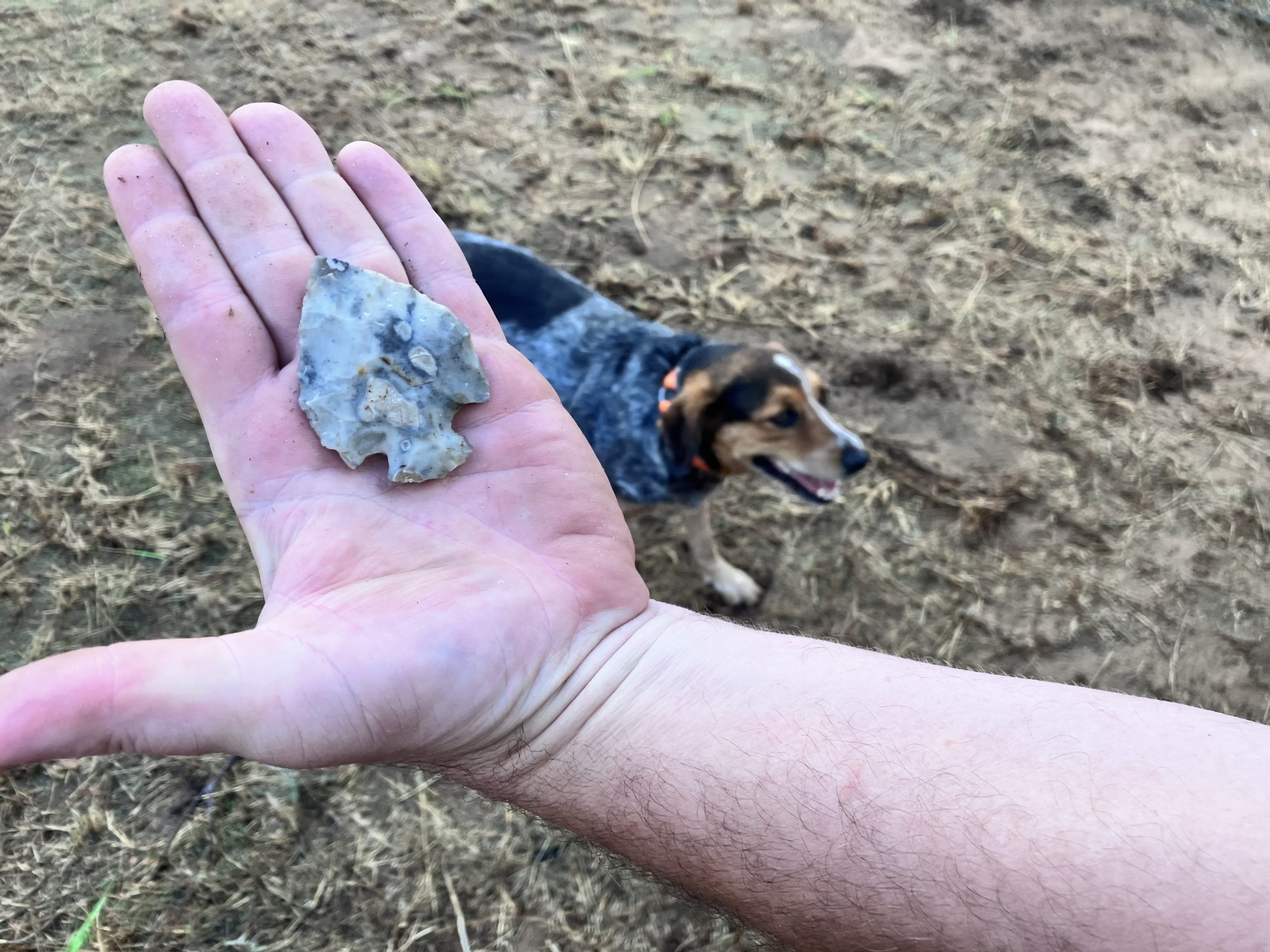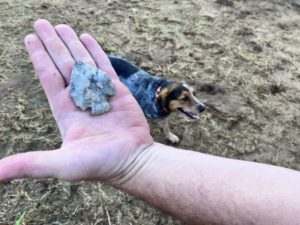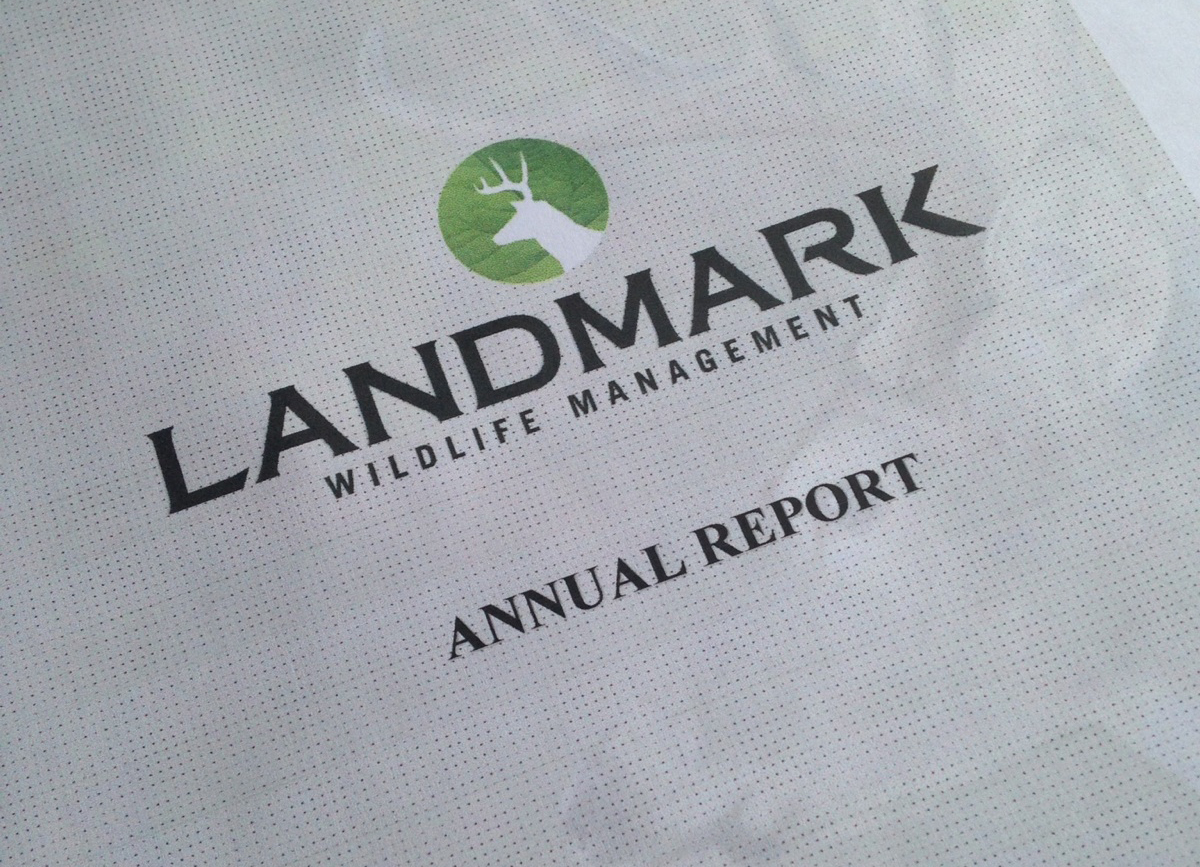A glint caught our eye as we walked through our family ranch in northwestern Blanco County. Embedded in the soil was a perfectly preserved projectile point, its edges sharp as if crafted just yesterday. We estimate that this stout spearhead was created between 2,200 – and 1,400 B.P. and think it’s so cool to have found this tactile connection to the lives that roamed Texas long before we did.
This chance discovery is one many Texans hope to find, and when they do, you can be sure you will hear about it. For us, it set us on a path to learn more about the artifacts and innovations of the earliest Texas. These projectiles, scattered across the vast landscapes of Texas, are more than just remnants of the past; they are chronicles of survival, culture, and advancement.
Unraveling the Past: What are Projectile Points and How Have They Changed Overtime?
Projectile points are meticulously shaped stone tools that ancient inhabitants of Texas (and all over the Americas) crafted for hunting and warfare. These tools, ranging from spearheads to arrowheads, provide invaluable insights into the lifestyles, techniques, and innovations of ancient tribes.
As we trace their evolutionary journey, it’s fascinating to observe the shifts and nuances in design, much like the ever-changing styles of automobiles over the decades. Each design iteration reflects the technological breakthroughs of its time and the specific challenges and needs the ancient Texans faced.
- Paleo points: Among the earliest projectile points in North America, these broad and fluted points hint at the immense challenges of their age. Crafted by nomadic hunters, they were likely employed to hunt large beasts like mammoths.
- Archaic stemmed points: The design evolved as centuries rolled on and beasts like mammoths became scarce. The fluted design transitioned to stemmed points, offering a more secure fit when attached to wooden shafts or reeds, and was likely used for hunting smaller, more agile game.
- Late prehistoric arrow points: The game-changer was the advent of the bow and arrow. This called for smaller, finely crafted points that were optimized for accuracy, distance, and speed.
These design evolutions highlight the ancient tribes’ adaptability, ingenuity, and profound knowledge of the environment and resources available to them. These projectile points across Texas are a testament to the vibrant tapestry of cultures and communities that once flourished in this vast land.
Texas Tribes and Their Projectile Traditions
Numerous Native American tribes have inhabited Texas over the centuries, crafting and utilizing projectile points for various purposes. Among the most prominent tribes:
- Caddo were mound-building agrarians in eastern Texas, known for pottery and trading
- Comanche were skilled horsemen of the Great Plains who were primarily nomadic buffalo hunters.
- Karankawa were semi-nomadic, alternating between fishing on the coast and hunting inland.
- Tonkawa in central Texas and the Wichita in the north also relied on buffalo hunting, with the Wichita settling in defensive villages.
- Apache tribes like the Lipan Apache were semi-nomadic and used projectile points for hunting and warfare before the Comanche’s dominance.
Dating the Points: Deciphering the Age Through Stone Characteristics
Dating projectile points is a meticulous process that combines both the study of artifacts and contextual clues from the surrounding environment. While assigning an exact age to these points can be challenging, archaeologists have developed methods to estimate their timeframes based on many factors.
- Material and Craftsmanship: The type of stone used and the technique of crafting can provide clues about the age of a point. Some stone materials were only accessible or popular during certain periods, while craftsmanship often evolved alongside technological advancements.
- Morphology and Design: As previously mentioned, the shapes and designs of these points underwent transformations over time. One can infer its approximate age by comparing a newly discovered point with well-documented types. For instance, broader Paleo points generally date back to an older era than the more delicate Late Prehistoric arrow points.
- Stratigraphy: In archaeological digs, the layer or strata in which a point is found can be indicative of its age. Older objects are typically found in deeper layers, while newer ones are closer to the surface. This layering provides a relative dating method.
- Radiocarbon Dating: While the stone itself cannot be carbon-dated, associated organic materials found nearby, such as charcoal from ancient campfires, can be. This method offers a more precise estimation of age.
- Contextual Clues: Often, points are discovered near other artifacts or remnants of ancient civilizations, like pottery shards, bones, or ancient fire pits. These associated items can provide temporal clues that help narrow down a time frame.
Each time a point is dated, it’s like piecing together a vast jigsaw puzzle of human history, offering a window into the challenges, aspirations, and daily lives of the people from times long past.
Purpose Beyond the Point: Understanding the Tips and Their Roles
Projectile points, with their distinct shapes and sizes, were not just products of artistic expression or random design; each held a functional purpose, informed by the needs of the society and environment at the time.
Hunting Tools:
- Large Game Points: Broader and heavier spear tips, often with serrated edges, were designed to penetrate thick hides and inflict significant damage, ideal for hunting mammoth, bison, and elk. These points needed to be sturdy to withstand the force of striking a large animal.
- Bird Points: Smaller, finer points were crafted for hunting birds and small game. Their lightweight design allowed them to be swiftly projected, causing minimal damage to the meat or feathers.
Butchering Tools:
- Scrapers: Typically wider and flatter with a semi-circular or straight edge. Used primarily to clean hides, they were invaluable in ensuring every part of an animal was utilized.
- Knives: Often elongated with sharp edges, these points were tailored for cutting and processing meat or plant material. Their design focused on precision and ease of handling.
Ceremonial Pieces:
- Elaborate Workmanship: Some points showcased intricate flaking techniques, detailed notches, and symmetry, indicating hours of careful work and suggesting they held more than just utilitarian value.
- Exotic Materials: Points made of rare stones or materials not commonly found in the area often signaled importance or prestige. These might have been traded over long distances or reserved for special occasions.
- Oversized Points: Unusually large or ornate points may not have been intended for practical use but rather as status symbols or ceremonial objects.
Recognizing and understanding the subtleties of these diverse points gives insight into ancient civilizations’ daily lives, priorities, and values. Each tip, notch, and curve tells a story, revealing a world where resourcefulness and creativity converged.
Discovering Texas’ Ancient Tools: Where to Look for Projectile Points in Texas
While these ancient treasures are scattered all over Texas, certain situations offer a better chance of discovery:
- Waterways: Creeks and rivers were hubs of activity and often served as campsites. Their banks and nearby terrains are prime spots for findings.
- Freshly plowed fields: Disturbed soil can reveal hidden artifacts, making newly tilled fields a treasure trove for enthusiasts.
- Post-rain: Rain can wash away concealing dirt, revealing hidden projectile points. The gleam of wet stone can often lead to a fascinating discovery.
If you discover a projectile point on your property in Texas and wish to gain more insight, consider consulting with local archaeologists from universities like the University of Texas at Austin or Texas A&M University. Additionally, the Texas Historical Commission, regional archaeological societies, local museums such as the Bullock Texas State History Museum, and artifact shows offer platforms for identification and expertise. Online communities, like Arrowheadology, can also provide feedback. Handle your find carefully and avoid any alterations until its significance is determined.
Notable or Famous Finds in Texas
Texas has a rich archaeological history, and numerous significant projectile point finds have been documented. Several museums and institutions in Texas house impressive collections of these artifacts, providing valuable insights into the prehistoric cultures of the region.
- Clovis Points: In North America, Clovis points are among the oldest and most widely recognized artifacts. These fluted points, dating back to around 13,000 years ago, have been found in various sites in Texas, suggesting the presence of some of the continent’s earliest inhabitants.
- Gault Site: Located in central Texas, the Gault Site has provided a wealth of archaeological artifacts, including projectile points that predate the Clovis culture. This site challenges traditional theories about the first humans in the Americas.
- Friedkin Site: Near the Gault Site, the Friedkin Site has revealed human occupation layers that go back over 16,000 years, making it one of the oldest known inhabited sites in North America.
Texas Museums with Impressive Collections
For anyone interested in the prehistory of Texas and its Native American inhabitants, these museums offer a rich tapestry of artifacts and exhibits that weave together stories of innovation, survival, and cultural evolution.
- Panhandle-Plains Historical Museum (Canyon, TX): The largest history museum in Texas, it offers extensive collections of Native American artifacts, including a wide range of projectile points spanning different eras.
- Bullock Texas State History Museum (Austin, TX): This museum tells the story of Texas, and its collection includes many Native American artifacts, including various projectile points.
- Witte Museum (San Antonio, TX): Renowned for its Texas history collection, the Witte Museum showcases many artifacts from the state’s prehistoric period, including a variety of projectile points.
- Lubbock Lake Landmark (Lubbock, TX): An archaeological and natural history preserve, it has revealed evidence of nearly 12,000 years of occupation. The site’s museum displays an assortment of projectile points from different periods.
- Museum of the Coastal Bend (Victoria, TX): This museum focuses on the region’s history and Native American cultures, with an array of projectile points among its exhibits.
In Texas, old arrowheads and other stone tools remind us of the people who lived here long ago. They made these tools to hunt, work, and maybe even for ceremonies. When we find these bits of history, it’s like a small window into their world. It’s fascinating to think about how people in Texas used to live and how they used the same land we do now.










